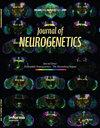远缘斑马鱼种群光/暗偏好的遗传性自然变异
IF 1.8
4区 医学
Q3 GENETICS & HEREDITY
引用次数: 5
摘要
摘要焦虑是对被认为具有威胁性的刺激的一种类似恐惧的反应。过度或无法控制的焦虑是一种使人衰弱的精神障碍,影响着许多人的一生。在揭示焦虑样表型的复杂遗传和环境调节过程中,测量斑马鱼幼虫自然避暗的模型揭示了这种焦虑相关特征的个体变异和遗传力。利用光/暗选择范式和选择性育种,本研究旨在使用远系斑马鱼品系EK验证AB-WT幼鱼可变(VDA)和强暗厌恶(SDA)遗传力的先前发现,该品系提供了更多的遗传多样性,有助于未来的分子图谱绘制工作。190只幼虫(6只 受精后天数[dpf和7dpf)在四个试验中进行了测试,并将其分为可变(VDA)、中等(MDA)和强烈(SDA)暗厌恶,以供进一步杂交。VDA和MDA幼虫随着时间的推移变得更具探索性,而SDA幼虫很少离开首选光照区。杂交中的SDA和VDA显著增加了第二代幼虫的各自表型,而VDA × MDA间杂交没有。对于第二代SDA队列,黑暗厌恶与运动反应增加相关,这强化了SDA作为焦虑样表型的作用。我们发现,深色厌恶特征以及SDA和VDA表型在远红色斑马鱼种群中是可遗传的,这为未来使用全基因组作图方法研究遗传基础奠定了重要基础。在一个高度可接近的模型生物中,这种保守的恐惧/焦虑样反应也允许进一步的药理学和行为研究来阐明焦虑的病因,并寻找新的焦虑症治疗方法。本文章由计算机程序翻译,如有差异,请以英文原文为准。
Heritable natural variation of light/dark preference in an outbred zebrafish population
Abstract Anxiety is a fear-like response to stimuli perceived to be threatening. Excessive or uncontrollable anxiety is a debilitating psychiatric disorder which affects many people throughout their lifetime. In unravelling the complex genetic and environmental regulations of anxiety-like phenotypes, models measuring the natural dark avoidance of larval zebrafish have shed light on the individual variation and heritability of this anxiety-related trait. Using the light/dark choice paradigm and selective breeding, this study aims to validate previous findings of the variable (VDA) and strong dark aversion (SDA) heritability in AB-WT larval zebrafish using the outbred zebrafish strain EK, which offers more genetic diversity to aid in future molecular mapping efforts. 190 larvae (6 days post fertilization [dpf] and 7 dpf) were tested across four trials and divided into variable (VDA), medium (MDA) and strong (SDA) dark aversion for further in-crosses. VDA and MDA larvae became more explorative with time, whereas SDA larvae rarely left the preferred light zone. The SDA and VDA in-crosses significantly increased the respective phenotypes in the second generation of larvae, whereas VDA × MDA inter-crosses did not. For the second-generation SDA cohort, dark aversion correlated with increased thigmotaxis, which reinforces SDA as an anxiety-like phenotype. Our finding that the dark aversion trait and SDA and VDA phenotypes are heritable in an outbred zebrafish population lays an important foundation for future studies of genetic underpinnings using whole-genome mapping methods. This conserved fear/anxiety-like response in a highly accessible model organism also allows for further pharmacological and behavioral studies to elucidate the etiology of anxiety and the search for novel therapeutics for anxiety disorders.
求助全文
通过发布文献求助,成功后即可免费获取论文全文。
去求助
来源期刊

Journal of neurogenetics
医学-神经科学
CiteScore
4.40
自引率
0.00%
发文量
13
审稿时长
>12 weeks
期刊介绍:
The Journal is appropriate for papers on behavioral, biochemical, or cellular aspects of neural function, plasticity, aging or disease. In addition to analyses in the traditional genetic-model organisms, C. elegans, Drosophila, mouse and the zebrafish, the Journal encourages submission of neurogenetic investigations performed in organisms not easily amenable to experimental genetics. Such investigations might, for instance, describe behavioral differences deriving from genetic variation within a species, or report human disease studies that provide exceptional insights into biological mechanisms
 求助内容:
求助内容: 应助结果提醒方式:
应助结果提醒方式:


